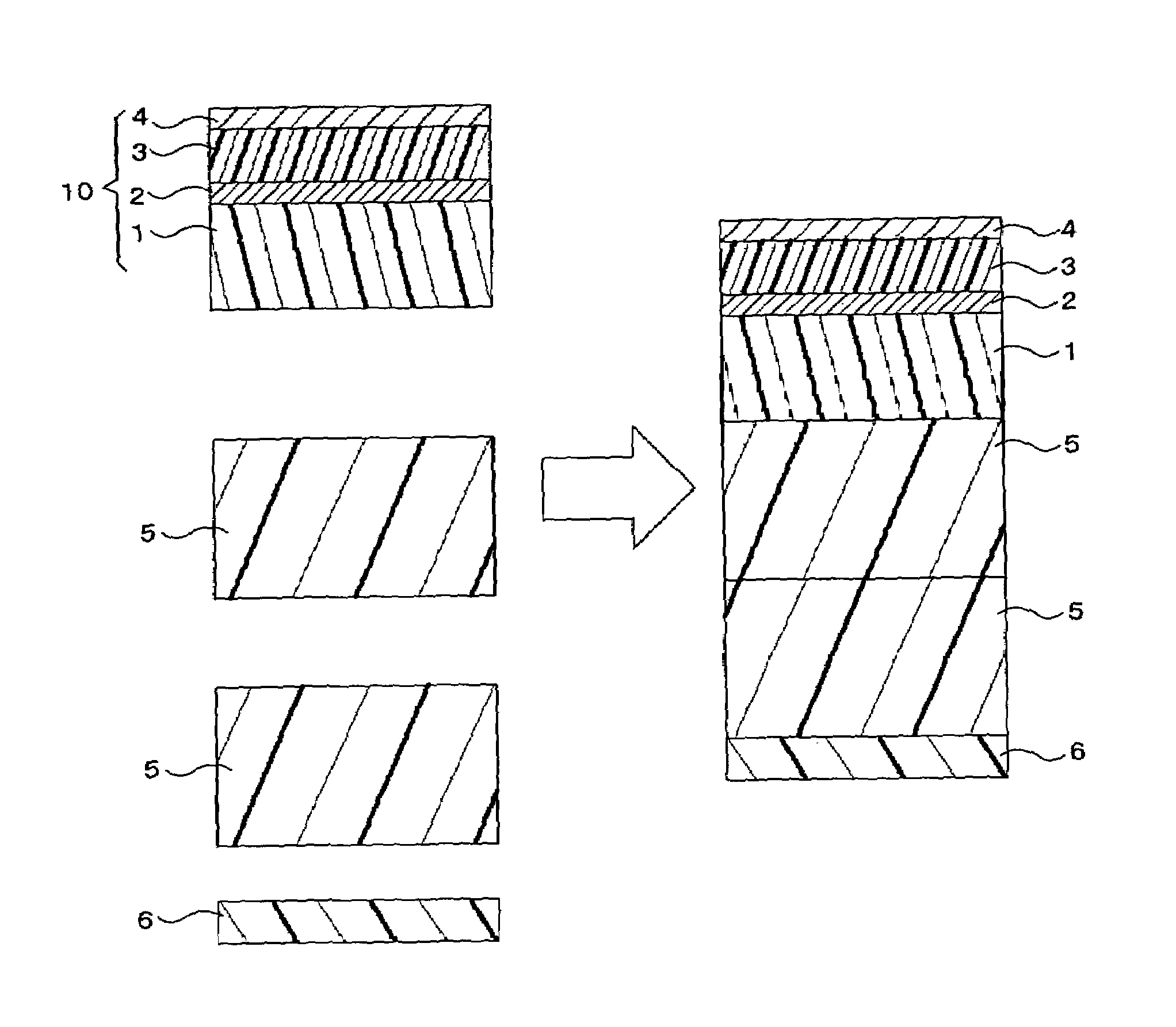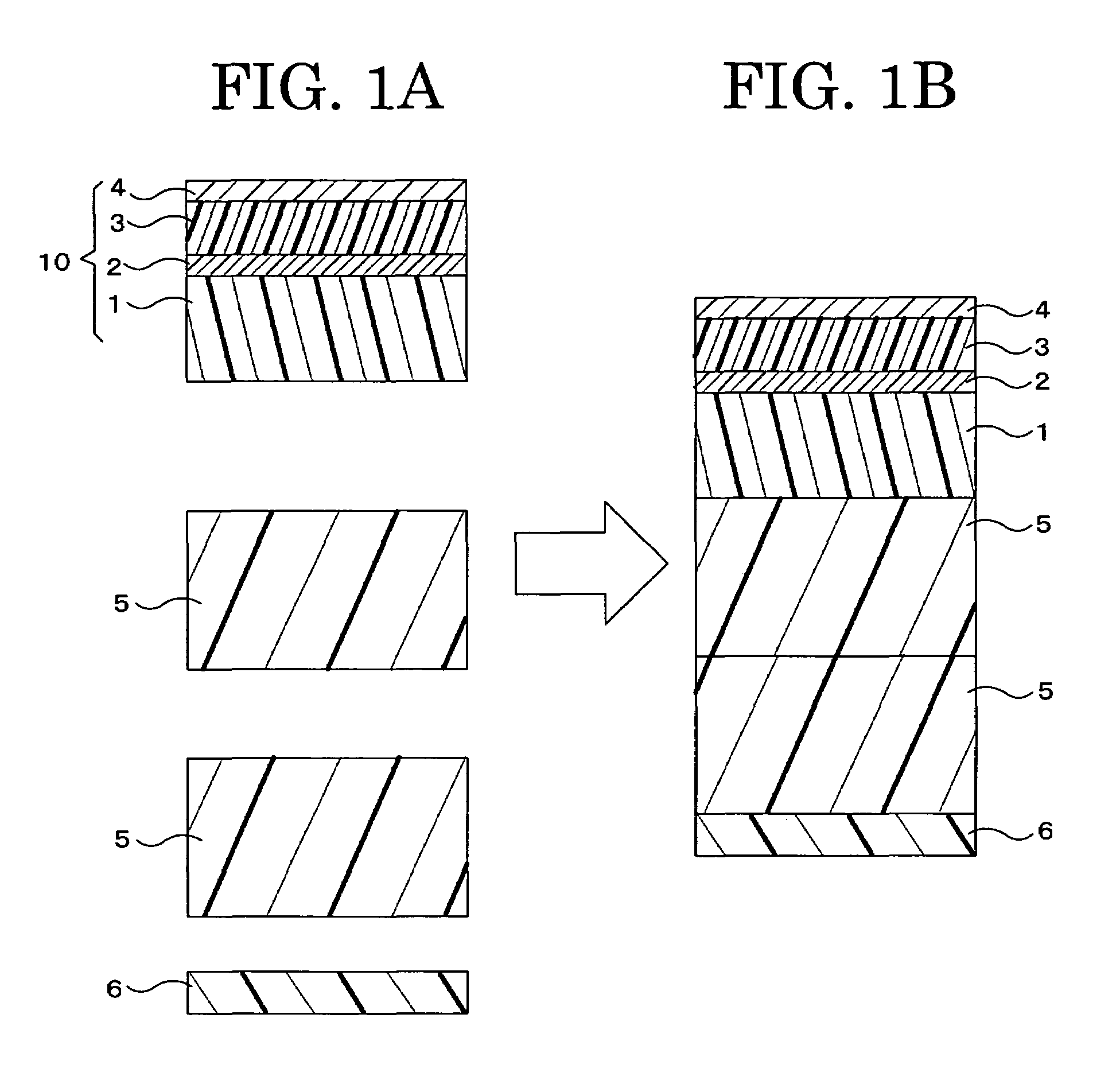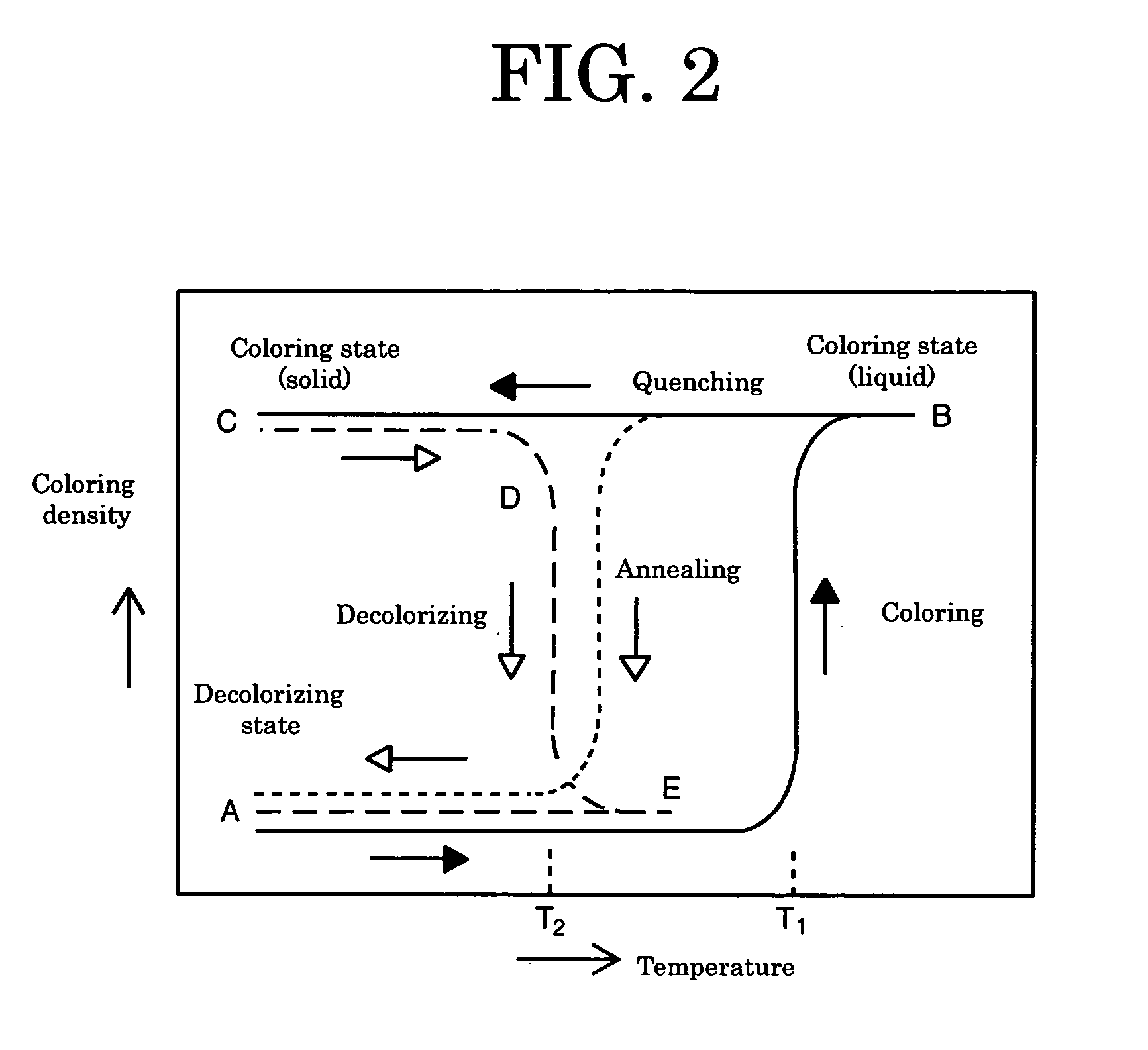Information recording-displaying card, image processing method using same, and image processor
a technology of information recording and display card, applied in the field of information recording display card, image processing method using same, image processing method, etc., can solve the problems of reducing sensitivity, reducing lifetime, reducing the embossability of polycarbonate resin, etc., and achieves easy scrapping and disposal, and excellent embossability and repetition durability.
- Summary
- Abstract
- Description
- Claims
- Application Information
AI Technical Summary
Benefits of technology
Problems solved by technology
Method used
Image
Examples
example 1
1. Prepare i) Support Constituting Over Sheet and ii) Barrier Layer Formed on Support
[0297]As a support, an amorphous sheet (branded as DIAFIX PA-C made by Mitsubishi Plastics, Inc.) having thickness of 100 μm was prepared which sheet contained, as a main component thereof, a polymer alloy resin made of an aromatic polyester resin and a polycarbonate resin.
[0298]Then, a barrier layer was formed in the following steps: i) preparing a drawing PET film (branded as DIAFOIL K233E made by Mitsubishi Polyester film Japan) having thickness of 4.5 μm, ii) coating one face of the drawing PET film with a two-solution adhesive solution (namely, containing a urethane resin and an isocyanate crosslinking agent), iii) drying, iv) forming an adhesive layer having thickness of 1 μm, v) overlapping the thus obtained adhesive layer on the support to be followed by dry laminating, vi) aging the thus obtained sheet for 24 hours at an atmospheric temperature of 40° C., and vii) forming the barrier layer ...
example 2
[0312]In the preparation of the over sheet, the example 1 was likewise carried out, except that the barrier layer was changed as follows, to thereby prepare an information recording-displaying card:
[0313]An amorphous sheet (branded as DIAFIX PA-C made by Mitsubishi Plastics, Inc.) having thickness of 100 μm was prepared which sheet contained, as a main component thereof, a polymer alloy resin made of an aromatic polyester resin and a polycarbonate resin. Barrier layer: a drawing PET film (branded as DIAFOIL K230E made by Mitsubishi Polyester film Japan) having thickness of 6 μm was used for a dry laminating on the above amorphous sheet.
example 3
[0314]In the preparation of the over sheet, the example 1 was likewise carried out, except that the barrier layer was changed as follows, to thereby prepare an information recording-displaying card.
[0315]An amorphous sheet (branded as DIAFIX PA-C made by Mitsubishi Plastics, Inc.) having thickness of 100 μm was prepared which sheet contained, as a main component thereof, a polymer alloy resin made of an aromatic polyester resin and a polycarbonate resin. Barrier layer: a drawing PET film (branded as DIAFOIL C230-8E made by Mitsubishi Polyester film Japan) having thickness of 8 μm was used for a dry laminating on the above amorphous sheet.
PUM
| Property | Measurement | Unit |
|---|---|---|
| temperature | aaaaa | aaaaa |
| thickness | aaaaa | aaaaa |
| thickness | aaaaa | aaaaa |
Abstract
Description
Claims
Application Information
 Login to View More
Login to View More - R&D
- Intellectual Property
- Life Sciences
- Materials
- Tech Scout
- Unparalleled Data Quality
- Higher Quality Content
- 60% Fewer Hallucinations
Browse by: Latest US Patents, China's latest patents, Technical Efficacy Thesaurus, Application Domain, Technology Topic, Popular Technical Reports.
© 2025 PatSnap. All rights reserved.Legal|Privacy policy|Modern Slavery Act Transparency Statement|Sitemap|About US| Contact US: help@patsnap.com



